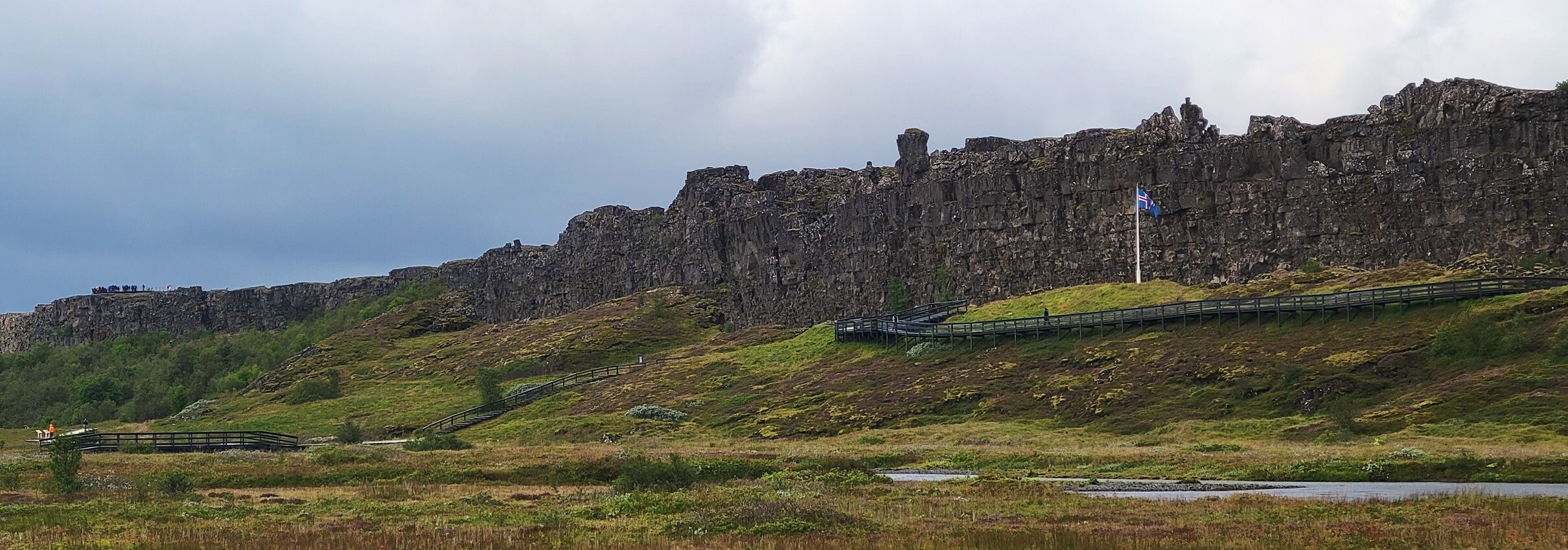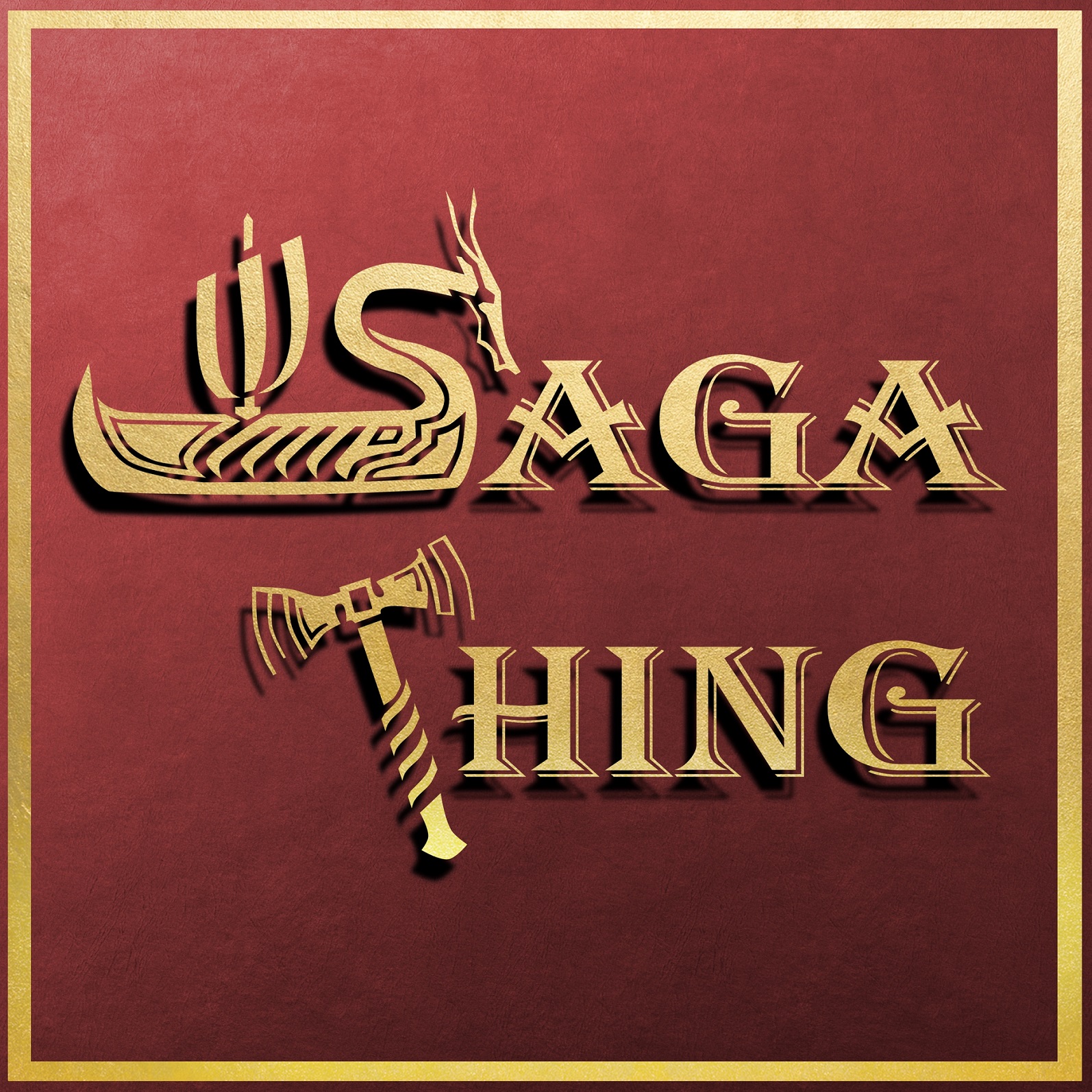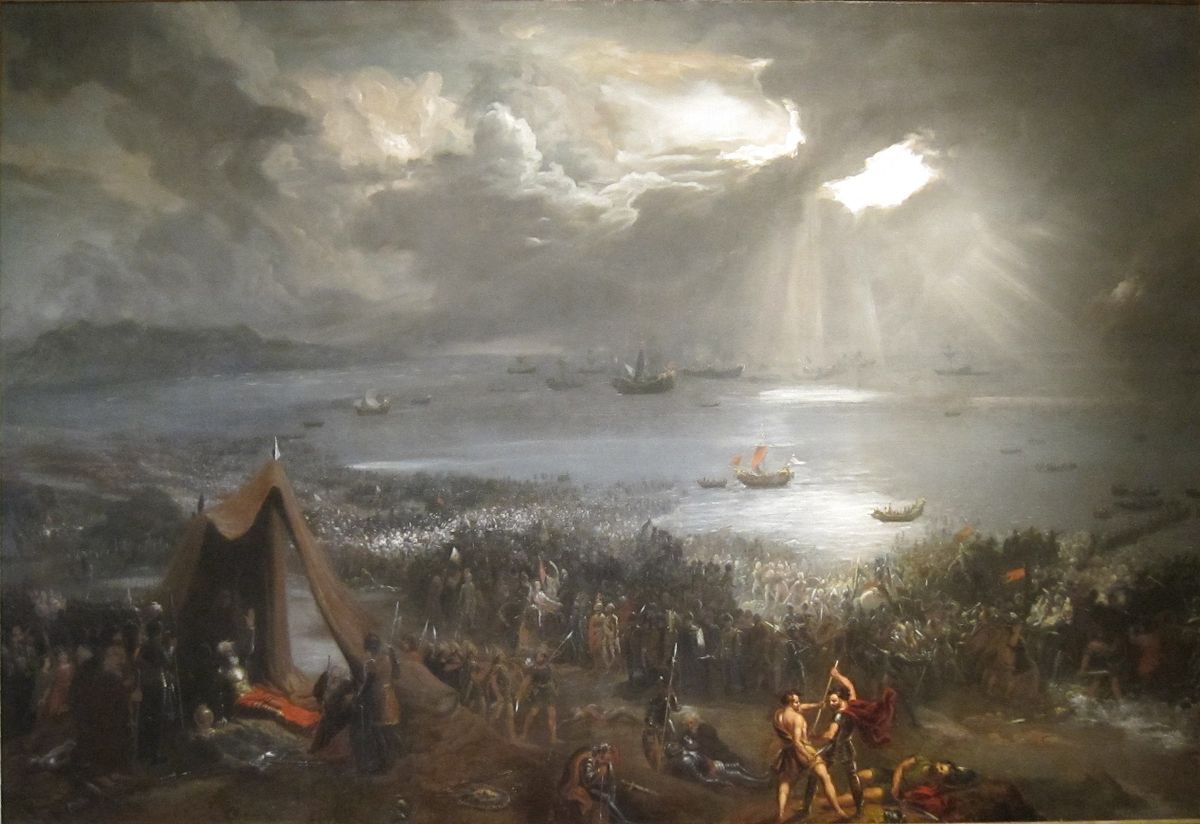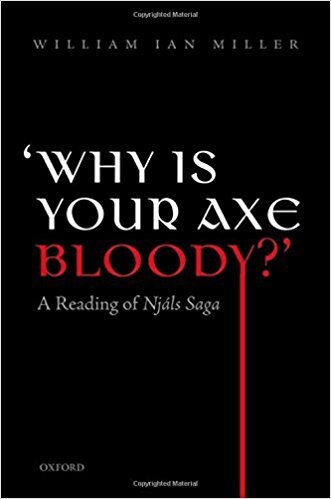Episodes
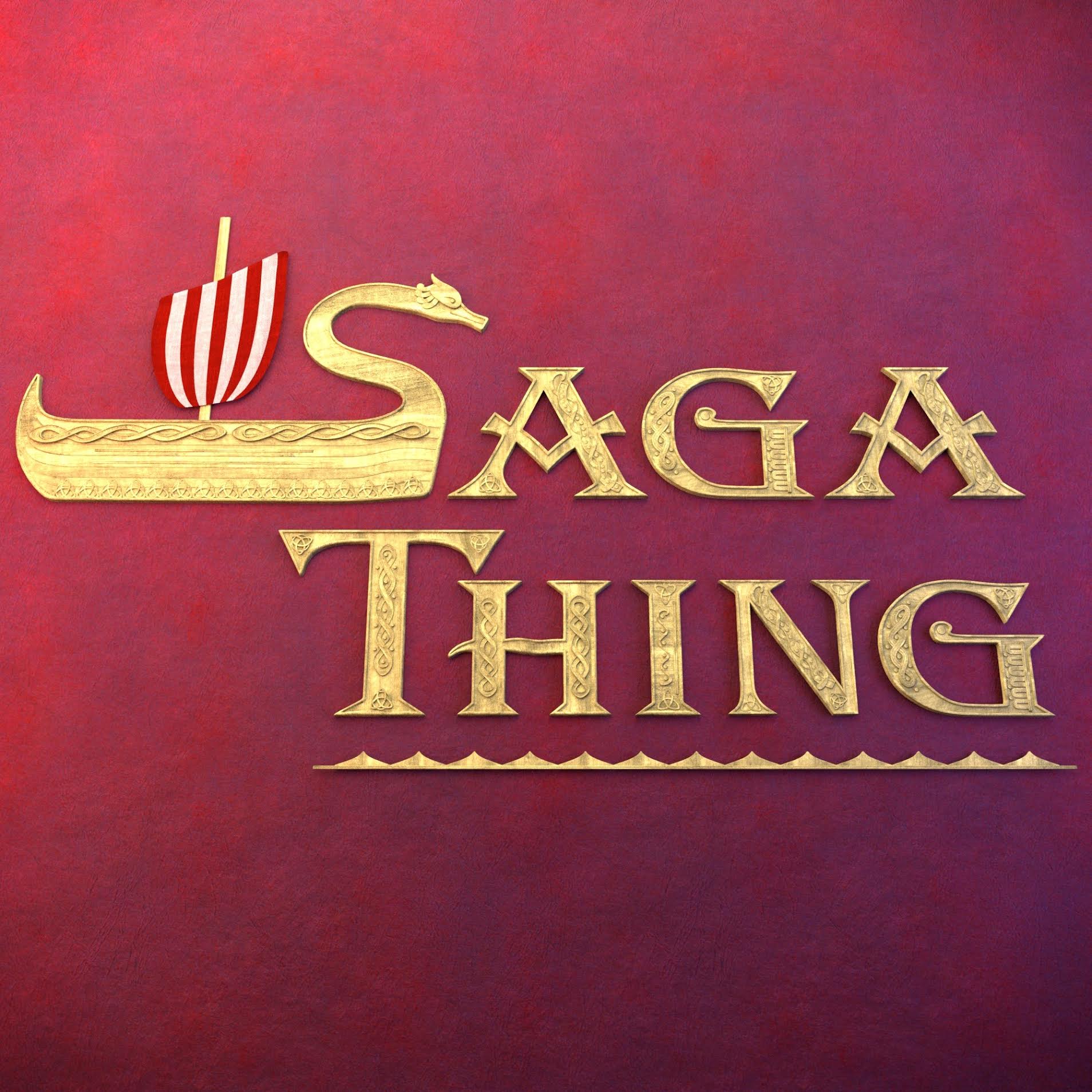
Monday Jun 12, 2017
Episode 22a - The Saga of the People of Vopnafjord
Monday Jun 12, 2017
Monday Jun 12, 2017
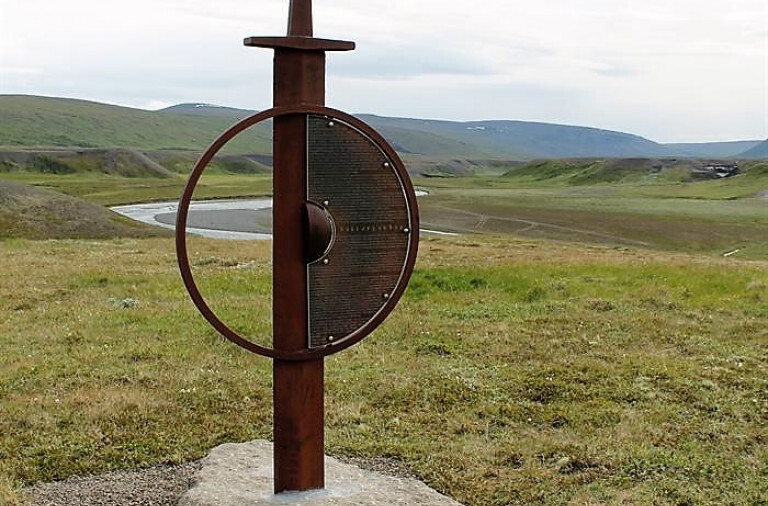
The Saga of the People of Vopnafjord picks up where The Saga of Thorstein the White left off. It tells the story of two friends, Brodd-Helgi Thorgilsson and Geitir Lytingsson, and their rise to power. The two men share everything in the beginning, including a desire to have that which is not theirs. Their friendship only deepens when Brodd-Helgi marries Geitir's sister, Halla. Later, their son Bjarni is given to Geitir as foster-son. Things really couldn't be better between the two leading men of Vopnafjord.
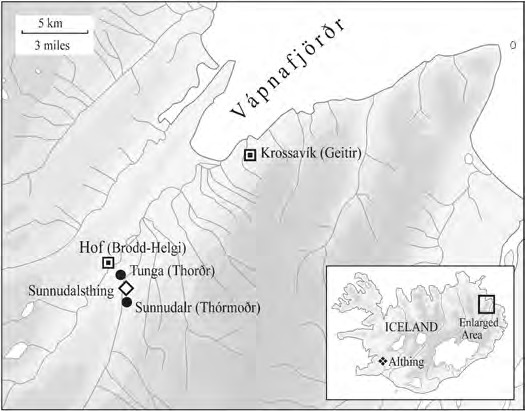
But things fall apart, as they do in these stories, after Brodd-Helgi and Geitir begin to mistrust one another after a plot to rob a hapless Norwegian merchant crumbles. Their relationship suffers further when Halla becomes ill and Brodd-Helgi wastes no time arranging another marriage for himself, this time to Thorgerd Silver. The resulting animosity between Geitir and Brodd-Helgi proves too much for the district to bear. Men from both sides are drawn into the conflict and some even lose their lives. Though Geitir is reluctant to act as the aggressor, he is finally put on the offensive after some prodding by his thingmen. What happens next is lost in the great gap left to us in the manuscript. The saga picks things up again with the next generation from each family trying to pick up the pieces. Here we find Bjarni, the son of Brodd-Helgi, going head-to-head with Thorkel, Geitir's son. The two are not only kinsmen, they had also grown up together at Krossavik. Though Bjarni attempts to make peace with Thorkel, there's little that can be done to assuage the thirst for vengeance. Will Bjarni succeed in putting an end to this bloody and unfortunate feud? Or will Thorkel continue the cycle of violence and pass it on to the next generation? There's only one way to find out.

The Stone Armor Defense
The above image comes from Hurstwic's recreation of Brodd-Helgi's clever use of a stone slab to protect himself from Svart in chapter 2 of Vápnfirðinga saga. Read all about this and other creative battle tactics here.
For some more on this saga and its background, check out:
Chapter 13 of Jesse Byock's Viking Age Iceland - "Friendship, Blood feud, and Power: The Saga of the People of Weapon's Fjord"
And if you're interested in traveling to Vopnafjord and taking in all the sights yourself, maybe take a gander at a waterfall or two and pause for some fishing, then start here at https://www.visitvopnafjordur.com/en
Music Credits:
Intro Music - "Prelude and Action" by Kevin MacLeod (incompetech.com)
Episode Summary - "Clash Defiant" by Kevin MacLeod (incompetech.com)
Outro Music - "Stormfront" by Kevin MacLeod (incompetech.com)
Selections from music by Kevin MacLeod licensed under Creative Commons: By Attribution 3.0 License http://creativecommons.org/licenses/by/3.0/
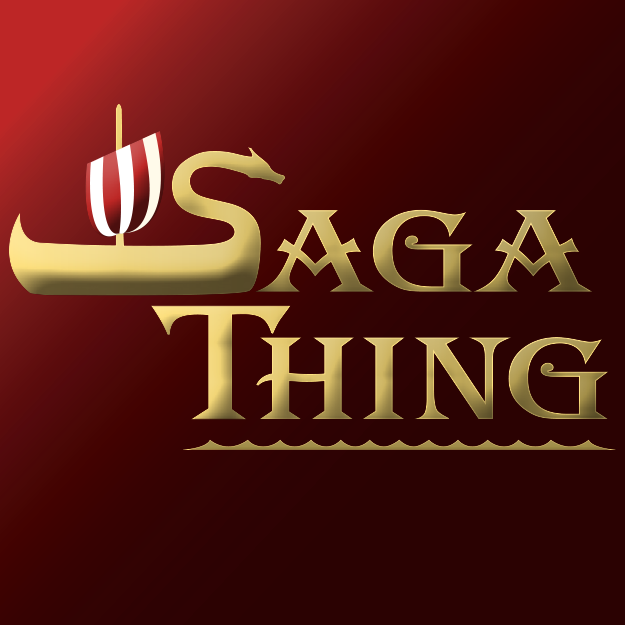
Friday May 19, 2017
Episode 21 - The Saga of Thorstein the White
Friday May 19, 2017
Friday May 19, 2017
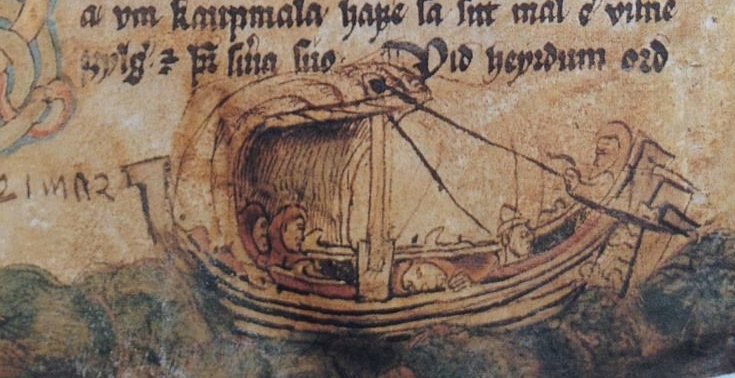
Still full from the epic meal of Njal's Saga, John and Andy turn to lighter fare. In this episode of Saga Thing, we follow Thorstein the White as he grows older and older and older. Along the way, he has some children and loses his beloved wife. To make matters worse, he also loses his eyesight, which makes running the farm a bit more difficult. Fortunately, his son Thorgils is there to pick up the slack...until he's killed in a local disagreement between Thorstein the Fair and his rival Einar. How will Thorstein the White get on without his trusted son? Who will raise little Brodd-Helgi Thorgilsson? And whose saga is this anyway? Listeners will find a lot more here about Thorstein the Fair and Einar than they will Thorstein the White. Nevertheless, join us as Saga Thing takes on The Saga of Thorstein the White!
Music Credits:
Intro Music - "Prelude and Action" by Kevin MacLeod (incompetech.com)
Episode Summary - "Iron Horse" by Kevin MacLeod (incompetech.com)
Outro Music - "Stormfront" by Kevin MacLeod (incompetech.com)
Selections from music by Kevin MacLeod licensed under Creative Commons: By Attribution 3.0 License http://creativecommons.org/licenses/by/3.0/

Friday Apr 21, 2017
Saga Brief 8 - Interview with Dr. Ragnhild Ljosland on the History of Runes
Friday Apr 21, 2017
Friday Apr 21, 2017
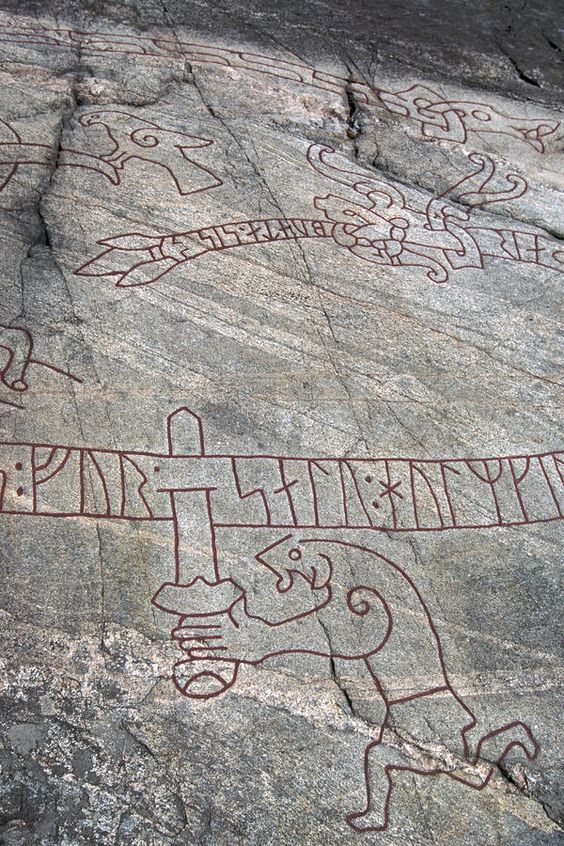
Over the past few years, listeners have often asked us to do something with runes. And who doesn't love runes? Whether it's a fascination with the runic inscription as a point of contact with another time or a sense that the runes themselves are more than a mere phonetic symbol, there's something magical about them. Even the word, rúnar carries with it layers of meaning, at times denoting "secret, hidden lore, or wisdom" and others referring to the written characters themselves. In this Saga Brief, John and Andy investigate the history, forms, and functions of runes with the help of Dr. Ragnhild Ljosland, linguist and runologist from the University of the Highlands and Islands' Centre for Nordic Studies in Orkney.
While you may think of runes as the alphabet of the Vikings, it's important to remember that runes come in many different forms and date back at least to the 2nd century CE. In fact, some point to the inscription on the controversial Meldorf fibula, a kind of brooch for pinning clothes, as evidence of runic writing in the early 1st century.
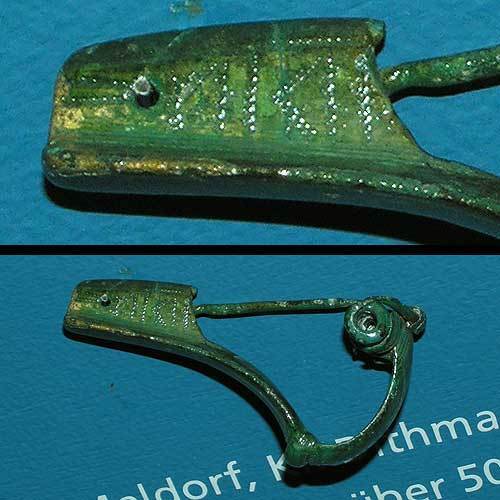
The Meldorf Fibula
The runic alphabet most of you will be familiar with is the futhark, named for the first six letters of the alphabet. With some minor variation, depending on region and date, the futhark was used by Germanic peoples throughout the early to late Middle Ages. This alphabet was designed for cutting or carving simple strokes into wood, leather, bone, metal, and stone. Each letter is drawn by combining verticle strokes (staves) and diagonal protrusions (branches). In the pre-Viking era, the dominant form of the futhark consisted of 24 letters representing the particular sounds of early Germanic languages.

The Elder Futhark
The opening of the Viking Age saw the emergence of a simplified 16 character alphabet, known as the younger futhark. Like its predecessor, the younger futhark's exact look was largely determined by the region. On the top here, you can see the long-branch (Danish) version of the younger futhark. The second row features the short-twig runic alphabet, a variant most often linked to Sweden and Norway. The short-twig variant is obviously much easier to carve than the long-branch.

The Younger Futhark
Wherever the Germanic and Scandinavian people went from the 2nd century to the early modern period, they left traces of their presence in the form of runic inscriptions on monuments, artifacts like jewelry, tools, and weapons, and other everyday materials. While the majority of their efforts have been lost, more than 6,000 items with runic inscriptions of one form or another survive. Most of these are from the period of the younger futhark. Below you'll find a sampling of some of the items we reference in this episode.
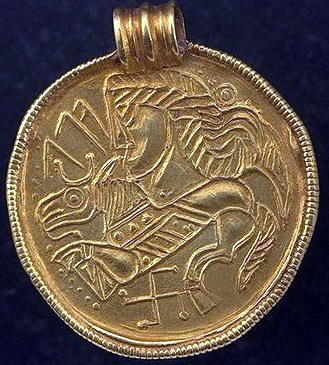
"Alu" inscription on Bracteate G 205 (ca. 400CE)
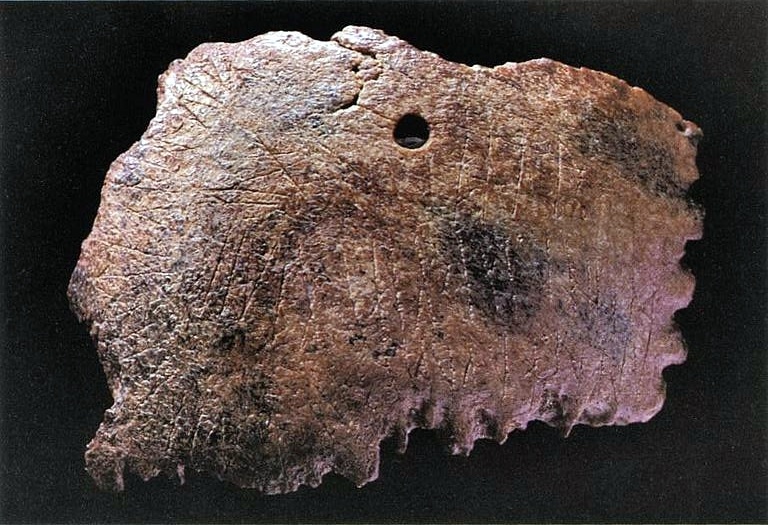
The Ribe Skull Fragment (mid-8th century)
We don't mention this example, but it's worth including here. On the top floor of the southern gallery of the Hagia Sophia in Istanbul there is a parapet with a faded runic inscription dated to the 9th century featuring the name of the carver, Halfdan. John and I love to talk about the Varangian Guard, the Byzantine Emperors' personal bodyguards. We'd like to imagine that Halfdan was a member of this elite unit. The plaque above the inscription suggests a date in the 800s, but don't believe everything you read.
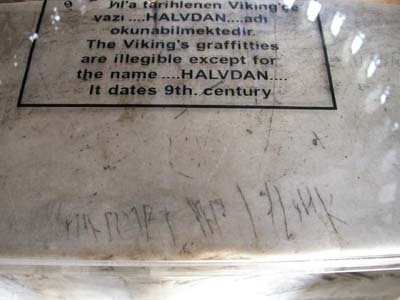
The Halfdan Runic Graffiti in the Hagia Sophia, Istanbul, Turkey
Near the end of the interview, we discuss ciphers. Really clever rune masters sometimes used these ciphers or cryptics to disguise their messages. The cryptic runes replace the letter with a picture containing a series of carefully plotted strokes. The simplest of these is the tree or branch runes, which can be seen on this image of the Hackness Cross:
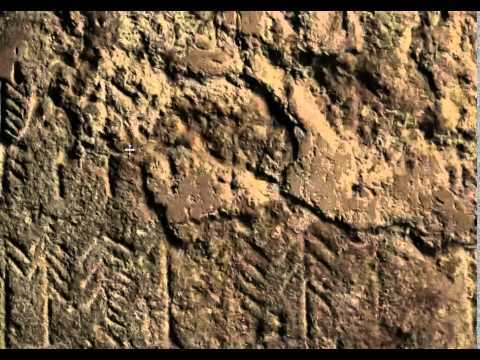
The Hackness Cross from Hackness, Scarborough, North Yorkshire
There are tent cryptics, fish cryptics, and many others, but our favorite is the bearded face cryptic from a runic stick recovered from a site at Bergen, Norway. How could it not be?

Runic stick from Bergen, Norway
We hope you enjoy the interview and this brief introduction to runes. There's plenty of good information out there if you're interested. Dr. Ljosland recommends
Bernard Mees and Mindy MacLeod's Runic Amulets and Magic Objects.
If you're interested in learning how to read runes, we recommend picking up a copy of Jesse Byock's Viking Language 1 & 2. It's an excellent introduction to Old Norse, runes, and the Icelandic Sagas! Visit http://www.vikingnorse.com/ for more information or click on the images below for links to purchase the books on Amazon.
As always, thanks for listening!
Music:
Outro - Ólafur Liljurós

Monday Apr 10, 2017
Episode 20l - Njal's Saga (Judgments)
Monday Apr 10, 2017
Monday Apr 10, 2017
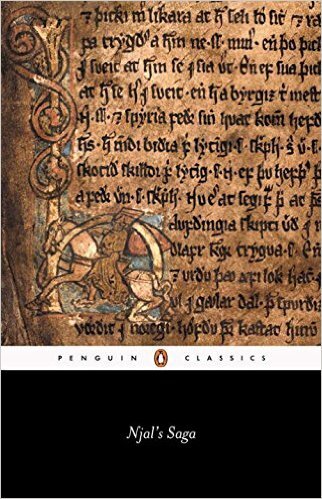
At long last, it is time to put Njal's Saga on trial. You've listened to the saga summary for nearly a year. Now, find out who will take home the prestigious Best Bloodshed and Notable Witticism trophies. Discover exactly how many bodies hit the floor (give or take a few). Learn interesting facts you never knew you needed to know, like who among the many candidates for Nicknames turns out to be related to Hamlet of Denmark. Review the crimes of the saga's villains and consider along with the hosts who most deserves a sentence of outlawry. If you could only take one man or woman from the saga as your thingman, who would you choose and why? Listen as John and Andy debate the question and finally select a new ally to join their formidable bands of thingmen. Is this, as many scholars agree, the very best of the Sagas of the Icelanders? Only John and Andy can decide. Join us now for the epic judgments of Njal's Saga!

Sunday Mar 19, 2017
Episode 20k - Njal's Saga (Part 11)
Sunday Mar 19, 2017
Sunday Mar 19, 2017
The epic journey through Njal's Saga finally comes to an end. In this episode, we follow Kari Solmundarson on his quest to avenge the deaths of everyone he was forced to leave behind in the burning house. His targets are Flosi and the Burners. With so many against him, the odds aren't in his favor. But Kari is known throughout Iceland for his unmatched bravery and fearlessness. His pursuit of the burners carries him from Iceland to the British Isles and then on to Rome. Along the way, we'll take a brief detour to Ireland for a glimpse at the historic Battle of Clontarf. Though this may be the end for our little summer saga, there's plenty here for everyone to enjoy. In addition to the revenge, the battles, and the blood, you'll want to keep listening for the world's strangest mathematics word problem and a brief discussion on Entish naming practices. Enjoy!
Promised References from this episode:
The Irish History Podcast - Episode 11: Brian Boru, The Battle of Clontarf, and the Aftermath
William Ian Miller's Why Is Your Axe Bloody?
Music Credits:
Intro Music - "Prelude and Action" by Kevin MacLeod (incompetech.com)
Previous Episode Review - "Whispering" by Paul Whiteman
Episode Summary - "Satiate - Percussion" by Kevin MacLeod (incompetech.com)
Hrafn's Clontarf Report Poem - "Teller of Tales" by Kevin MacLeod (incompetech.com)
Outro Music - "Stormfront" by Kevin MacLeod (incompetech.com)
Selections from music by Kevin MacLeod licensed under Creative Commons: By Attribution 3.0 License http://creativecommons.org/licenses/by/3.0/
